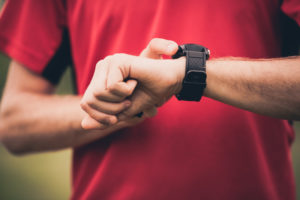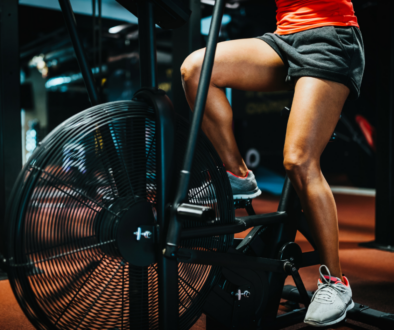What is Fitness? Part 1: Cardio
Cardiorespiratory fitness is measured by VO2 max and refers to the ability of heart and lunges to deliver oxygen to the body. Cardiorespiratory efficiency is improved with activities that use large muscle groups and increase the heart rate: a brisk walk, Zumba, swimming, cycling, running, jumping rope, rowing, and even intense circuits of body weight or weighted exercises.
Cardiorespiratory training improves VO2 max by strengthening the heart and lungs; elevates your mood and alleviates anxiety; reduces the risk of high blood pressure, diabetes, and other chronic conditions; helps control blood sugar; boosts your energy; helps to maintain a healthy body weight; and improves memory and focus.
Notice I said cardio helps to maintain a healthy weight? Contrary to what you’ve seen on social media and late-night infomercials, cardio will not make you lose weight. Only improving your nutrition can do that. Cardio helps with your weight loss goals by improving functions in your brain associated with impulse control (put down the cookie!), planning (#mealprep), and working toward a goal (remember your why).
How much cardio do you need?
For Cardiorespiratory training, The American College of Sports Medicine recommends at least 150 minutes of exercise each week (30-60 minutes of moderate-intensity exercise over 5 days or 20-60 minutes of vigorous-intensity exercise over 3 days).
How to meet those guidelines:
 Steady State cardio at least once per week. This is low to moderate endurance training. You’ll be in Zone 1 for 20-60 minutes, depending on your fitness level and goals. Do any activity that allows you to keep a consistent heart rate for the duration of the workout.
Steady State cardio at least once per week. This is low to moderate endurance training. You’ll be in Zone 1 for 20-60 minutes, depending on your fitness level and goals. Do any activity that allows you to keep a consistent heart rate for the duration of the workout.
Trainer’s tip: steady state cardio is perfect the day after a really tough workout. It can help alleviate soreness and speed recovery.
Intervals no more than twice per week. Get your heart rate into Zone 2 or 3 with high intensity bouts of work (i.e. sprint) followed immediately by low intensity rest. If you’ve never tried intervals, start with 30 seconds of work followed by 2 minutes of rest. As intensity goes up, duration goes down: your interval workouts might be 10-45 minutes.
Trainer’s tip: I use the free app, Seconds Pro. I program the timer, the commands, and the number of rounds and it plays over my music. HIIT (High Intensity Interval Training) will leave you burning even more calories when the workout is over because of the increased E.P.O.C. (excess post-exercise oxygen consumption).
MetCons no more than twice per week. A MetCon (Metabolic Conditioning) is a challenging circuit with little or no rest. These are completed for reps or time and can include bodyweight exercise (burpees, pushups, and sit ups) and also equipment (battle ropes, medicine balls, and jump ropes). These are meant to be relentless; spend about 12-20 minutes on these.
Trainer’s Tip: Avoid exercises and equipment you’re not completely confident with. In the middle of intense circuit is no time to learn how to properly swing a kettlebell. Keep track of your results so you can repeat and compare. Seeing a few more reps or a little faster finish time is a great motivator.
Whether you’re on steady state, intervals or a metcon, you’ll need to warm up and cool down. The more intense the workout, the more time you’ll spend on these. And don’t forget to stretch after! I’ll cover Flexibility/Mobility next.
Alicia Cross is a Certified Personal Trainer, Wellness Coach, and Yoga Instructor with more than 15 years’ experience working with clients in classes and one-on-one. She is a yogi, meditator, vegan, and lifter of heavy things. If you’re ready to discover the strength and peace that comes from within, email Alicia@AliciaCrossTraining.com.
Related Posts:
What Should I do First? Strength or Cardio?





